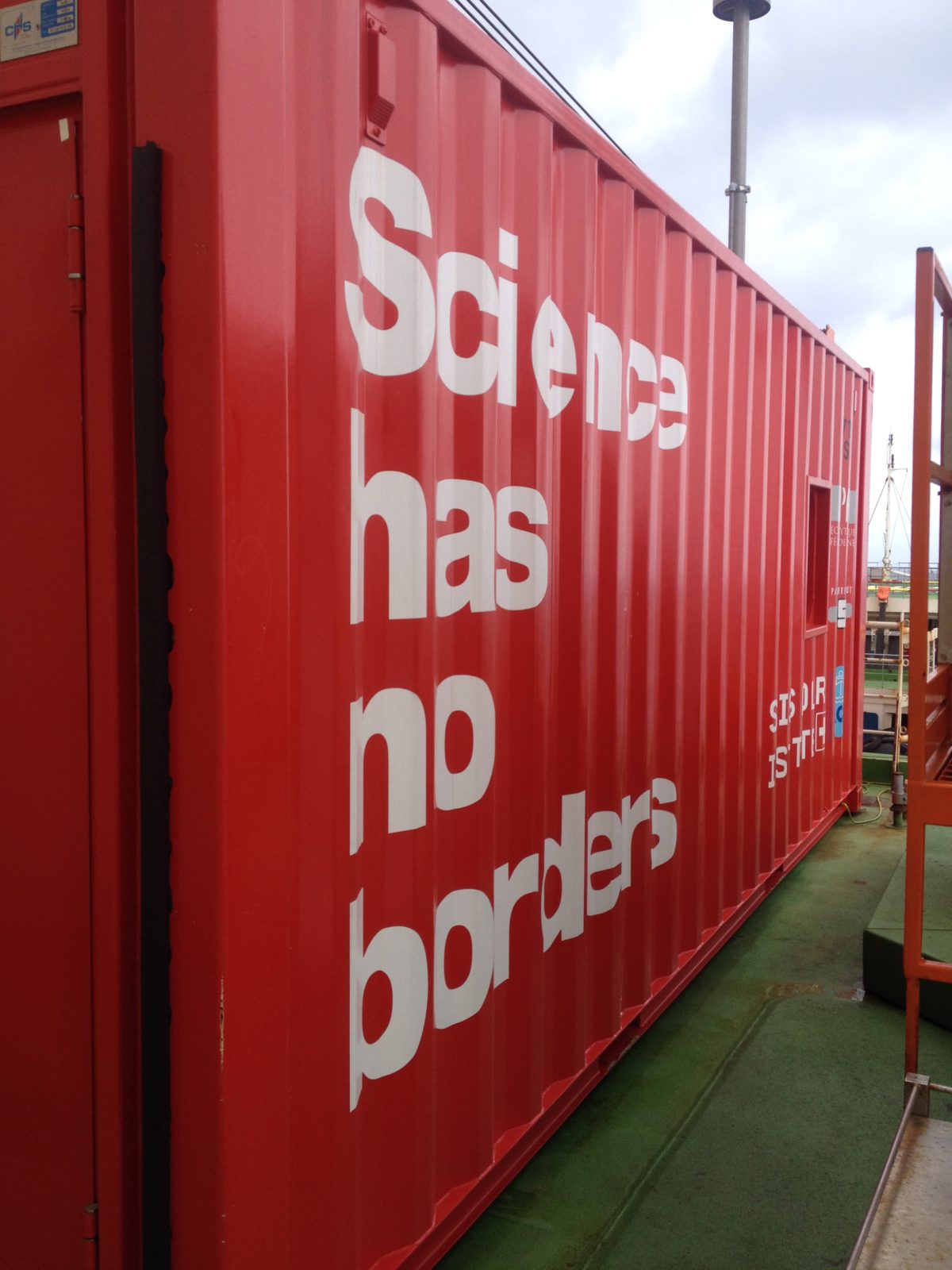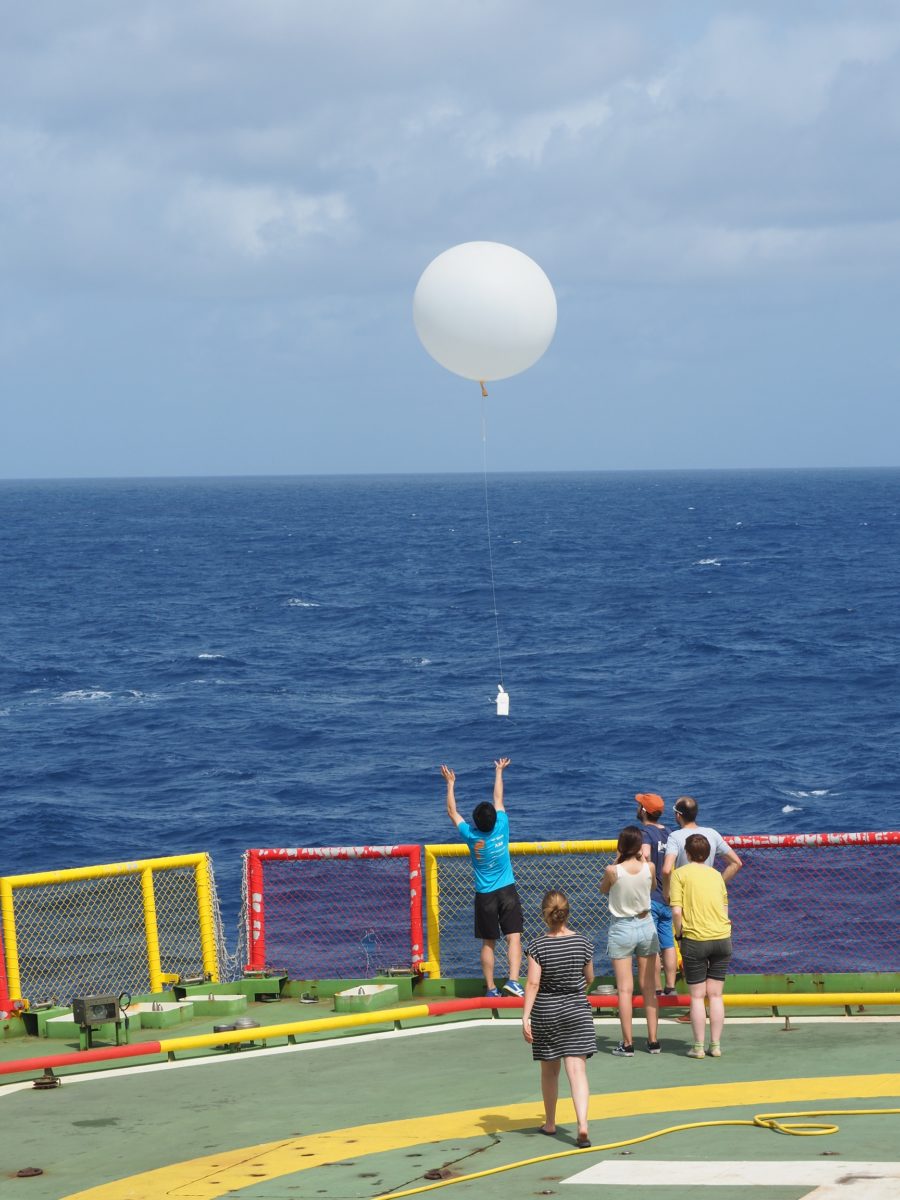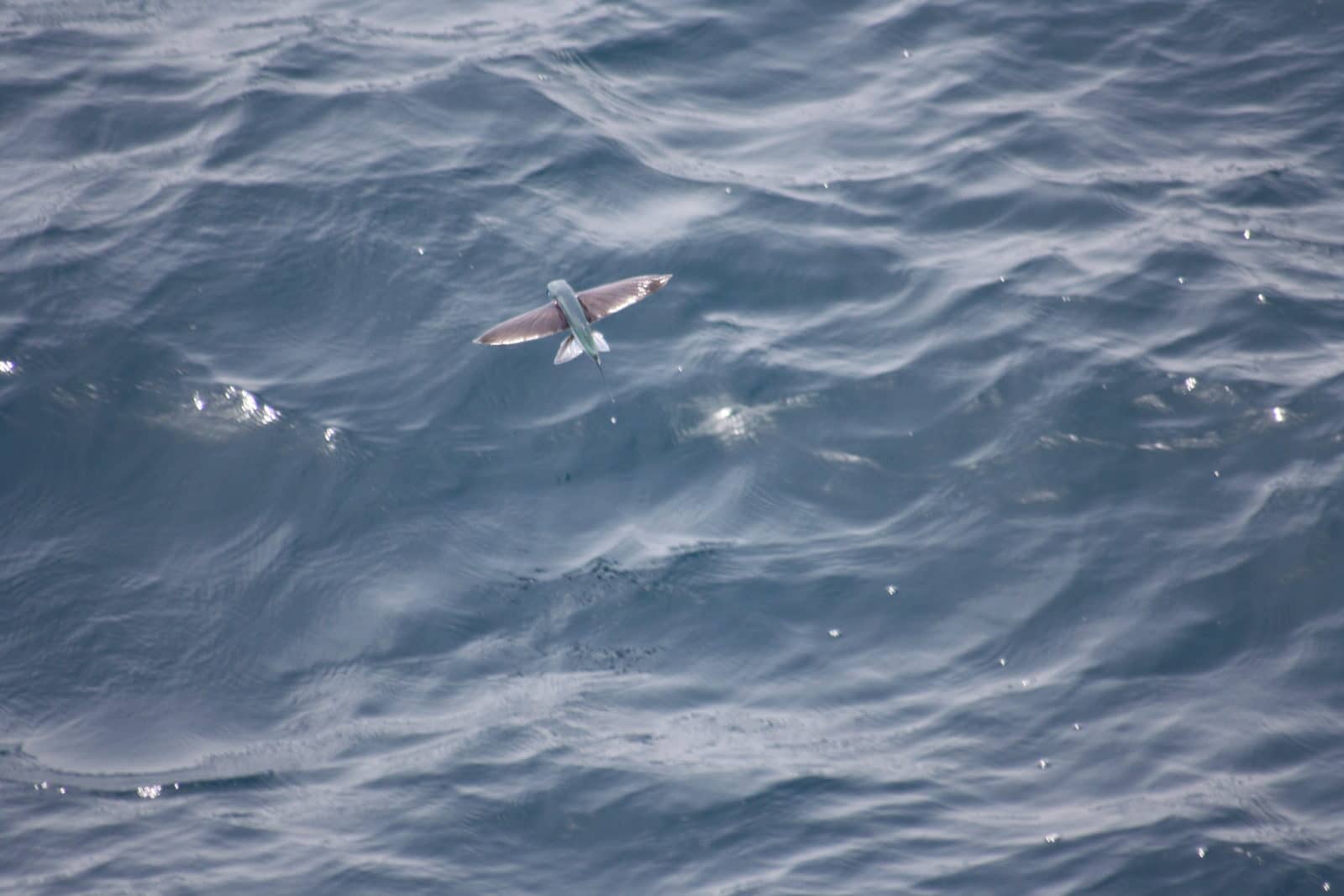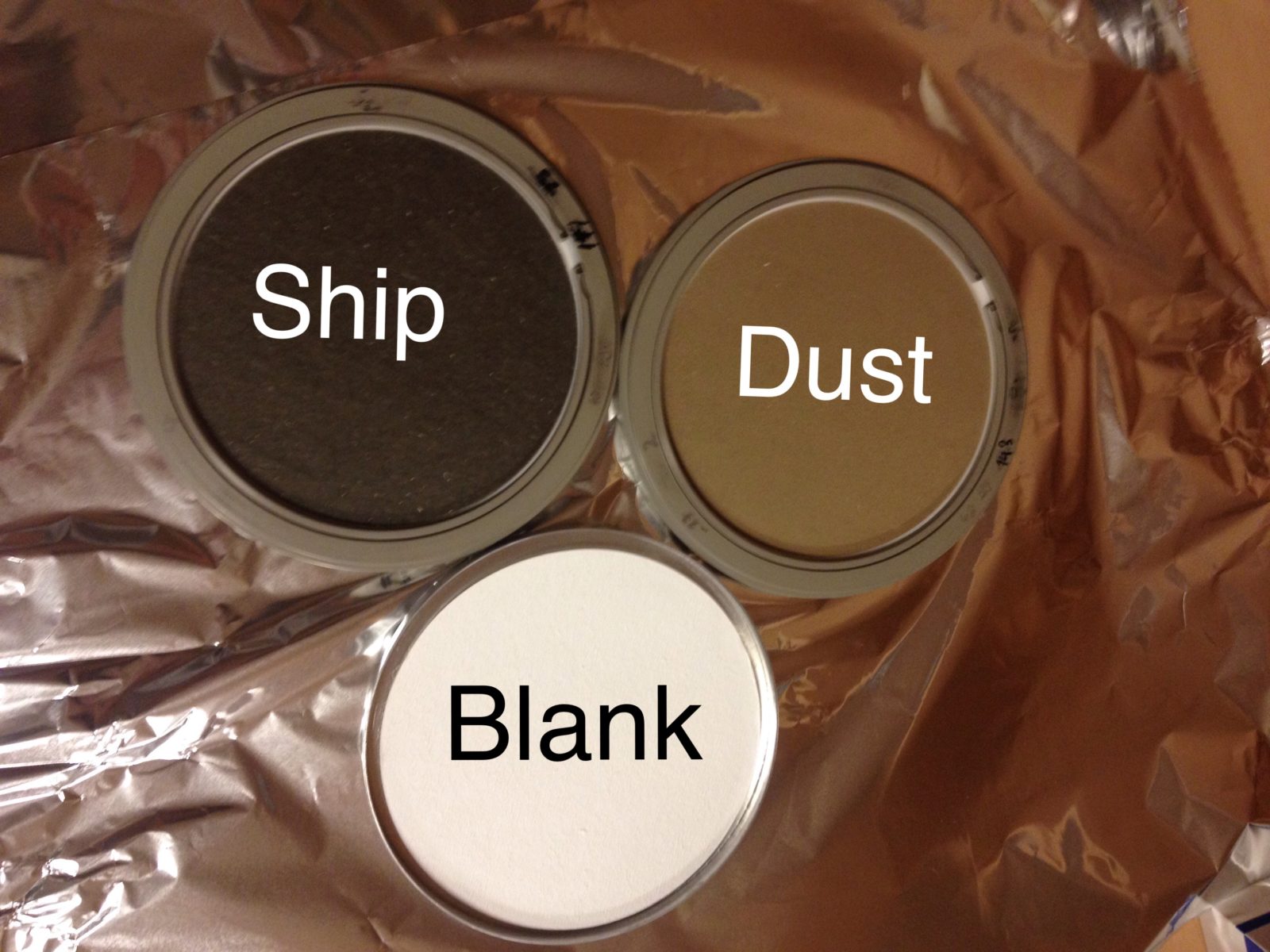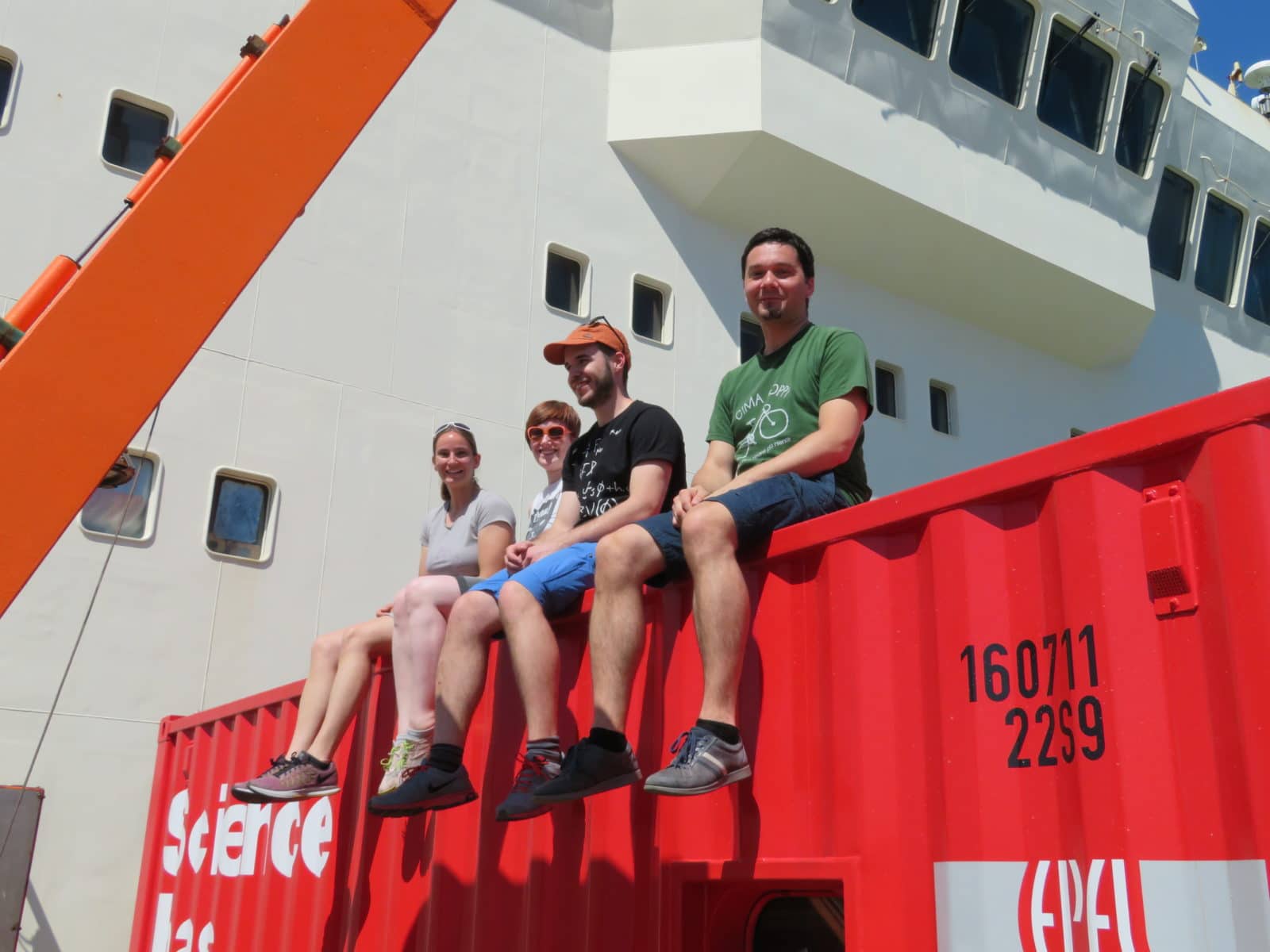Atmospheric measurements for project 7 (Study of preindustrial-like Aerosol-Climate Effects) are kept going also during Leg 4 from Cape Town to Bremerhaven. During our journey we expect to see the transition from pristine marine conditions into areas with more and more anthropogenic influence (e.g. from biomass burning and industry) as we approach Europe.
As soon as we left Cape Town in the beginning of Leg 4, the particle number concentration dropped rapidly from more than 20 000 in cubic centimeter in the harbor (indicating quite polluted air) to about 150/cc at the open sea (very clean air). Nothing can be seen except sea, flying fish and occasionally some cargo ships on the horizon, or a pack of dolphins chasing the boat. However, our measurements are revealing the unseen…

We measure the number, size and composition of small aerosol particles floating in the air and the concentrations of selected gases and vapors. These particles have the size of only a fraction of a human’s hair diameter. Most of our instruments are located in a red container onboard the Akademik Thresnikov. Inside, it “looks like a space station” as one of our colleagues onboard said, when visiting the container for the first time.
There are just 13 expedition members onboard for Leg 4, which makes the ship a quiet place compared to the previous legs with more than 70 scientists. With the low number of people, the scientific team really seems like a big family, where Inigo, our scientist in charge, is nothing but our pater familias. “We all live in an orange Treshnikov (singing)”, we all sit at the same table for the meals and our daily science meetings are just informal discussions in front of a cup of coffee. Treshnikov is a friendly and collaborative working environment, where everyone feels responsible for the challenges and problems faced also by the other projects.
One example: the launch of the first radiosonde. Everyone was so keen to help Yongbiao with his first balloon that this simple activity, just a daily routine on the previous legs, turned into an exciting team effort for all of us.
During the time we were close to the equator, the sun was heating the walls of the red container with the atmospheric measurements so intensively that the air conditioner could not keep up. Temperature inside the container was alarmingly high (+38 °C), especially during afternoons. Even the nights did not bring relief, as the air was hot and humid around the clock.
We tried several innovative, but sadly inefficient, solutions to keep the temperature down (like shutting down some instruments, adding more and more fans and even bringing buckets of ice into the container). We can assure you that being in the middle of the ocean, with very limited resources, powerlessly observing the continuous increase of the temperature inside your lab, can be really frustrating. In particular when you know, that too high temperatures could potentially damage the instruments and/or lead to the loss of valuable data. However, thanks to the nice Leg4-supporting team, we never gave up, and as a last resource we were allowed to borrow a portable air conditioner from one of the other projects onboard (Thank you!). This brought some more cool air into the container and helped us keep measuring in the extreme conditions. Finally, a change in the weather with stronger winds and cooler air resolved the issue with the baking-hot container.
After leaving the warm waters of the equator, life began to thrive again inside and above the ocean: flying fish started to fill up the observation notebook of Giuseppe and Andrea (project 19), sea birds were flying in the sky, and phytoplankton clogged all the water filters, slowing down the underway water collection. Also the world of aerosols became more interesting: after days of stable, clean conditions we suddenly started measuring more than 1000 particles/cc. This could be due to the influence of coastal Africa: anthropogenic emissions, forest fires or mineral dust from deserts (as can be seen from the brownish filter in the picture).
However, we are also curious to see, if the higher variability in the particle concentration could be related to the biological activity in the ocean. Phytoplankton is a well-known producer of dimethyl sulfide (DMS), the dominant sulfur compound emitted from the world’s oceans. DMS can get oxidized into sulfuric acid, a precursor of aerosol particles. Blend some organic compounds into the mix, and the magic could happen: new particles start forming from gaseous precursors over the ocean. New particle formation is responsible for about half of the cloud droplet seeds (CCN) globally, thus having a large impact on our climate. If this process occurs also over the ocean, is still a mystery that we would like to solve during this expedition.
